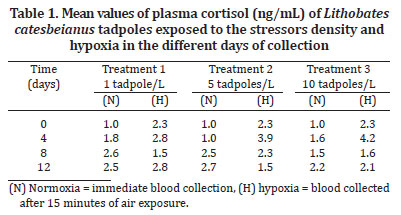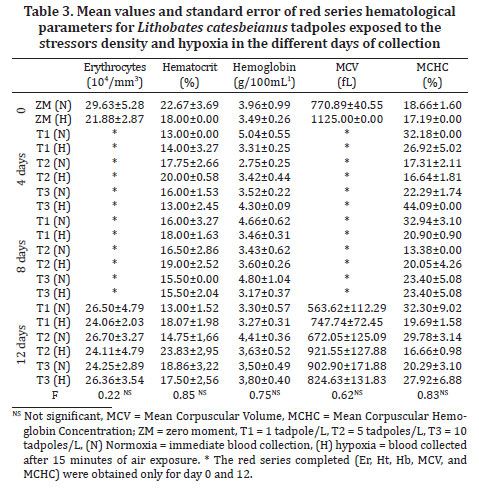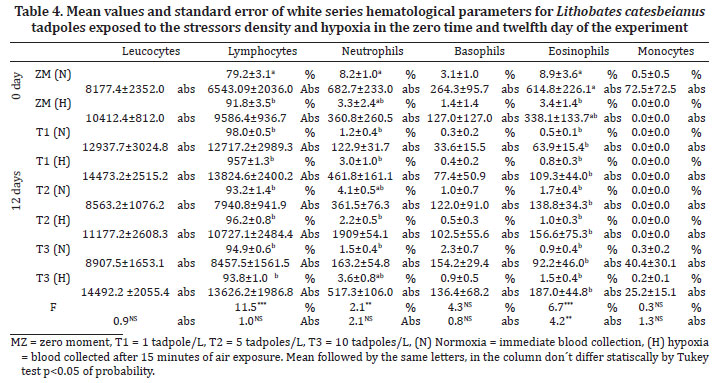The aim of this study was to evaluate alterations to the physiological profile (cortisol, glycaemia, and blood parameters) of Lithobates catesbeianus caused by the stressors density and hypoxia. The organisms were in the prometamorphosis stage and exposed to different tadpole densities: 1 tadpole/L (T1), 5 tadpoles/L (T2), and 10 tadpoles/L (T3) for 12 days. The blood was collected through the rupture of the caudal blood vessel and collected under normoxia (immediate collection) and hypoxia (after 15 minutes of air exposure) conditions. Cortisol levels rose on the fourth and eighth days of treatment and returned to basal levels by the end of the experiment. The stressor mechanisms tested did not affect glycaemia. White blood cells (total number of lymphocytes, neutrophils, and eosinophils) showed a significant difference at the twelfth day of the experiment when compared with the start of the experiment. We concluded that, under controlled conditions, a density of up to 10 tadpoles/L and air exposure for 15 minutes did not cause harmful physiological alterations during the experimental period. The answer to these stressors maybe was in another hormonal level (corticosterone).
Frogculture; Lithobates catesbeianus; hematology; stress; cortisol






